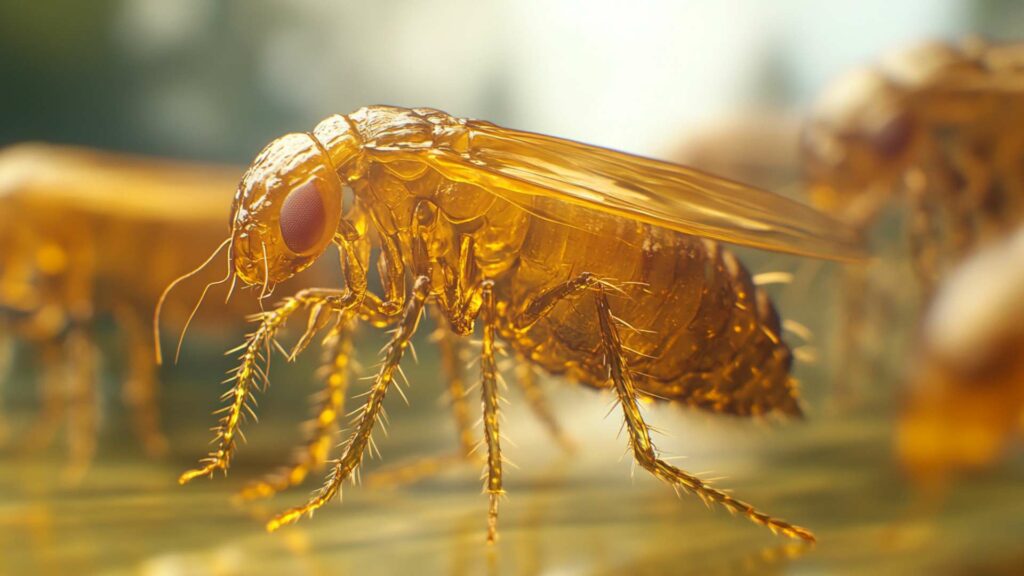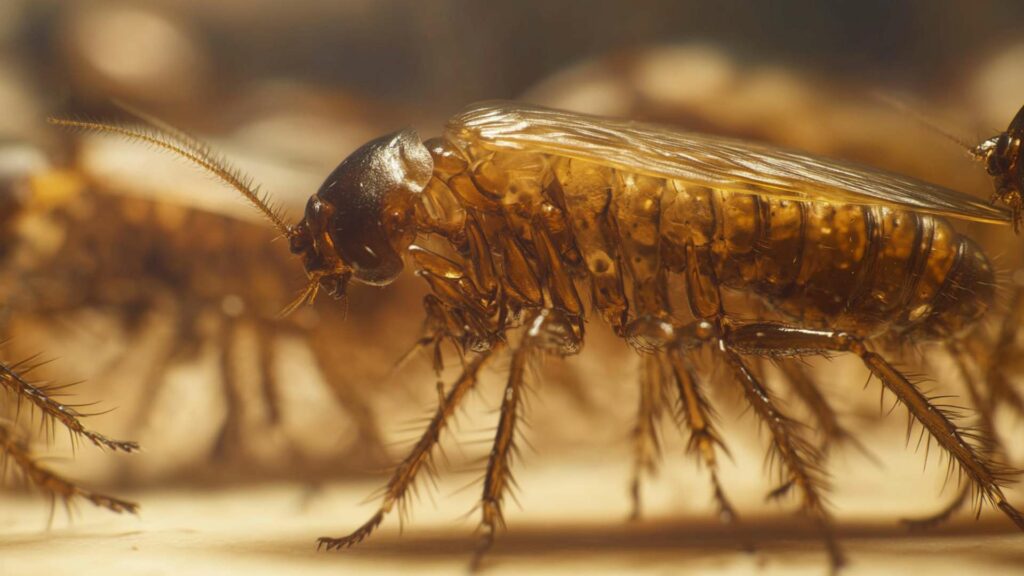Fleas, those tiny yet persistent little creatures, can wreak havoc on our beloved pets and even our own households. Understanding the importance of flea prevention is crucial in keeping our furry friends happy and healthy.
Fleas are not just nuisance pests; they are parasites that feed on blood, causing discomfort and potential health issues for both animals and humans. By implementing a proactive approach to flea control, we can prevent these pesky critters from infesting our homes and causing unnecessary suffering.
The key lies in breaking their life cycle before they have a chance to reproduce or spread diseases like Lyme disease or Rocky Mountain spotted fever. Prevention is always easier than trying to eradicate a full-blown infestation later on.
Benefits of a regular flea prevention routine
A regular flea prevention routine offers several benefits that go beyond simply eliminating these bothersome pests. First and foremost, it provides peace of mind for pet owners who worry about their furry companions scratching incessantly or suffering from hair loss due to fleas. Furthermore, consistent flea prevention helps maintain a clean living environment.
When fleas invade your home, they don’t limit their residency to the carpet or just your pet’s fur. They can quickly establish themselves in carpets, furniture, bedding—basically, anywhere your pet roams freely.
By adhering to a regular preventive routine, you significantly reduce the risk of dealing with an infested home. Preventing fleas year round all-round saves you time and money in the long run.
Treating an active infestation requires intensive efforts such as deep-cleaning carpets with hot water or seeking professional pest control services. By consistently protecting your pet from these parasites throughout the year, you decrease the likelihood of experiencing such headaches while also maintaining your four-legged friend’s well-being.
Remember: Flea season isn’t limited to warmer months; these critters can thrive in our climate-controlled homes year-round. So, let’s dive into the world of flea prevention and keep those pesky parasites at bay!
Identifying Fleas and Their Impact
Overview of fleas and their life cycle
Fleas, those tiny, pesky creatures that can wreak havoc on your furry friends and even on us humans! These minuscule insects belong to the Siphonaptera order and are known for their ability to jump long distances.
The flea life cycle consists of four main life stages namely: egg, larva, pupa, and adult. The adult female flea lays eggs on the host animal (like your beloved pet), or in the surrounding environment such as carpets or bedding.
These eggs then hatch into tiny larvae that feed on organic debris like flea feces or dead skin cells. After molting a few times, the larvae spin cocoons where they undergo metamorphosis and emerge as adult fleas ready to continue their blood-sucking adventures.
Common signs of a flea infestation
To detect a potential dog flea infestation early on is crucial in order to take prompt action. Keep an eye out for telltale signs such as excessive scratching or biting by your pet. Fleas are crafty little critters that love to hide in warm areas with easy access to blood meals.
So if you notice your furry companion constantly scratching behind their ears, around the base of their tail, or even nibbling at their paws excessively, it’s time to investigate further. Another sign may be small red bumps or rashes on your pet’s skin caused by bites or an allergic reaction to flea saliva.
Keep in mind though that not all pets show these symptoms; some may be more tolerant while others can have severe reactions. Apart from directly observing your pets, you might also spot live fleas scurrying through their fur during grooming sessions.
And don’t forget about those little black specks commonly known as “flea dirt” – these are actually flea feces that turn reddish brown when moistened. Gross, right?
Health risks associated with fleas for pets and humans
Fleas aren’t just a nuisance; they carry diseases that can pose serious health risks to both our furry friends and ourselves. For pets, fleas can lead to skin irritations, causing itching, redness, and inflammation. Some animals may develop an allergy to flea saliva, resulting in a condition called flea allergy dermatitis (FAD).
This allergic reaction intensifies the itching and can lead to hair loss and secondary infections due to constant scratching. But it doesn’t stop at skin irritation – fleas and ticks can also transmit diseases.
Pets can contract various tick-borne diseases such as Lyme disease or Anaplasmosis from infected fleas. Flea infestations may also allow for other pests like ticks to establish themselves on your pet’s body or within your home.
Humans aren’t entirely off the hook either. While humans are not natural hosts for fleas, these bloodsuckers don’t hesitate to take a bite if given the chance.
Flea bites on humans typically result in itchy red welts that may last for days. Furthermore, people living in infested homes are at a higher risk of flea bites compared to those who don’t have furry companions.
And let’s not forget about the psychological toll of dealing with an infestation – constant itching and worrying about these little critters crawling around is enough to drive anyone up the wall! Remember: early detection and prevention are key when dealing with fleas!
Choosing the Right Flea Prevention Products
Exploring different types of flea prevention methods (topical, oral, collars)
When it comes to keeping those pesky fleas away from our beloved pets, there are various options available in the market. It’s important to familiarize yourself with the different types of flea prevention methods in order to make an informed decision. Topical treatments, such as spot-on solutions or sprays, are one popular option.
These products are applied directly to your pet’s skin and provide long-lasting protection against fleas and ticks. Oral medications, on the other hand, offer convenience as they come in the form of tasty chewable tablets that your pet can easily consume.
Another alternative is flea collars which release chemicals that repel and kill fleas. Each method has its own advantages and suitability depending on your pet’s preferences and needs.
Factors to consider when selecting a product (pet’s age, weight, species)
Before purchasing any flea prevention product for your furry friend, it is crucial to take into account several factors. Firstly, consider your pet’s age as some products may not be suitable for puppies or kittens under a certain age.
Weight also plays a role since dosage requirements can vary based on size; using an incorrect dosage may result in ineffective flea treatment or even potential harm to your pet. Additionally, different species have unique needs when it comes to flea prevention; what works for dogs might not work for cats due to variations in their physiology and sensitivity levels.
Understanding the active ingredients in flea prevention products
To ensure effective flea prevention and safeguard your pet’s health, it is essential to understand the active ingredients used in various preventive products available on the market. The most common active ingredients found in these flea treatments include imidacloprid, fipronil, selamectin, and fluralaner. These chemicals target fleas at different stages of their life cycle, preventing reproduction and killing them off.
It is advisable to consult with your veterinarian to determine the most suitable and safe active ingredient for your pet, taking into consideration any existing health conditions or potential interactions with other medications your pet may be taking. By exploring the different types of flea and tick prevention and methods available, considering factors such as age, weight, and species when selecting a product, and understanding the active ingredients used in these prevention products, you can make an informed decision that caters to your pet’s specific needs.
Remember that these measures are crucial in combating flea infestations effectively and protecting both your pets and yourself from the health risks associated with fleas. So take a proactive approach in choosing the right flea prevention product – your furry friends will thank you!
Establishing a Flea-Free Environment
Importance of treating both indoor and outdoor areas for fleas
Creating a flea-free environment is crucial when it comes to preventing infestations. Fleas are not just limited to your pet’s fur; they can hide in various nooks and crannies around your home.
Treating both fleas in indoor and outdoor areas is essential because fleas can easily be carried indoors through open doors or by other animals. Indoor areas, such as carpets, bedding, and furniture, provide warm and cozy environments for fleas to thrive.
These hotspots should be thoroughly treated to eradicate any existing fleas or eggs. Additionally, don’t forget about the outdoor spaces where your pets spend time; treating these areas will prevent them from picking up new fleas while exploring.
Tips for effective vacuuming and cleaning routines to eliminate fleas

One of the most effective methods to combat fleas is regular vacuuming. The powerful suction of a vacuum cleaner can remove adult fleas, eggs, larvae, and pupae from carpets, rugs, upholstery, and cracks in floors or furniture. To maximize the effectiveness of vacuuming as part of your flea prevention routine:
1. Vacuum all surfaces where your cat or your pet spends time.
2. Pay close attention to hotspots like carpets, bedding, and furniture.
3. Don’t forget corners, crevices, and under furniture where fleas often hide.
4. Empty the vacuum bag or clean the canister immediately after each use to prevent reinfestation.
Paying attention to hotspots (carpets, bedding, furniture)
Fleas have a preference for certain areas in your home where they find warmth and sustenance. Understanding these hotspots will help you direct your efforts effectively when treating for fleas.
Carpets are a favored breeding ground for fleas due to their fibers trapping dirt, pet dander, and eggs. Regularly vacuuming and steam cleaning carpets will help eliminate fleas at all stages of their life cycle.
Bedding is another target area since it provides warmth and a source of blood for fleas. Frequently wash your dog or pet’s bedding in hot water to kill any existing fleas, larvae, or eggs.
Furniture can also harbor fleas, especially if your pets spend time lounging there. Vacuum upholstered furniture thoroughly and consider using protective covers that can be easily washed or replaced.
Using steam cleaners or natural remedies for additional protection
In addition to regular vacuuming, using steam cleaners can provide an extra layer of protection against fleas. The high temperatures generated by steam cleaners effectively kill both adult fleas and their eggs. This method is particularly useful on carpets, upholstery, curtains, and other fabric surfaces that may be challenging to treat with traditional methods.
If you prefer a more natural approach to flea prevention, certain remedies can be effective as well. For example, diatomaceous earth is a fine powder made from fossilized algae that works by dehydrating and killing fleas upon contact.
Sprinkle it on carpets, bedding, or any areas prone to flea activity but remember to keep pets away from direct skin contact with the powder. By establishing a flea-free environment through comprehensive indoor and outdoor treatment methods like vacuuming regularly and utilizing steam cleaners or natural remedies where applicable, you’ll significantly reduce the risk of infestation and protect both your pets’ health and your home from the potential dangers associated with these pesky parasites
Creating a Regular Flea Prevention Schedule
Frequency guidelines for different types of flea prevention products
When it comes to flea prevention, consistency is key. Establishing a regular schedule for treating your pets and your home is essential in keeping those pesky fleas at bay. The frequency of treatments depends on the type of flea prevention products you choose.
For topical treatments and oral medications to prevent fleas, most experts recommend monthly application to ensure continuous protection against fleas. However, it’s important to follow the specific instructions provided by the product manufacturer or consult with your veterinarian for personalized recommendations based on your pet’s needs.
Monthly treatments vs long-lasting options
When deciding between monthly treatments and long-lasting options, there are a few factors to consider. Monthly treatments often come in the form of spot-on treatments that are applied directly onto your pet’s skin or oral medications that need to be administered regularly.
These options provide effective protection against fleas all year round but require consistent effort on your part. On the other hand, long-lasting options such as flea collars or certain spot-on treatments can provide protection for several months at a time.
These products contain slow-release chemicals that continuously kill and repel fleas over an extended period. While they may initially cost more than monthly treatments, they can save you time and effort in applying frequent applications.
Considerations for seasonal variations in flea activity
Flea activity tends to be more prevalent during warmer months when conditions are ideal for their reproduction and survival. During this time, it’s crucial to increase your vigilance in monitoring and preventing fleas from infesting your pets and home.
Regularly check your pet’s fur using a fine-toothed flea comb, paying close attention to areas where fleas love to hide such as around the neck, base of tail, and underbelly. Additionally, it’s important to adapt your flea prevention routine based on your local climate and any travel plans you may have.
Certain regions may have different peak flea seasons, so staying informed about local trends can help you be proactive in protecting your pets. If you plan on traveling with your pet to an area known for high flea activity or different climate conditions, consult with your veterinarian beforehand for specific recommendations to ensure adequate protection.
By following these guidelines and establishing a regular flea prevention schedule, you can effectively protect your pets from the health risks associated with fleas and maintain a flea-free environment in your home. Remember, consistency is key when it comes to preventing fleas, so stick to the recommended frequency of treatments based on the type of product you choose.
Be aware of seasonal variations in flea activity and make necessary adjustments to keep those little parasites at bay. Stay proactive, keep those tails wagging or cats purring happily, and enjoy a more flea and tick-free life with your beloved furry companions!
Additional Measures to Enhance Flea Prevention Efforts
Incorporating natural remedies alongside chemical treatments
When it comes to keeping those pesky fleas at bay, it’s worth considering the use of natural remedies in addition to chemical treatments. Essential oils such as lavender, eucalyptus, and peppermint have been known to repel fleas.
Simply dilute a few drops of your chosen oil with water and spray it on your pet’s bedding or around your home. However, always ensure that the essential oil you’re using is safe for pets, as some can be toxic if ingested or applied directly to their skin.
Another option is diatomaceous earth (DE), a fine powder made from fossilized algae. DE works by dehydrating fleas and their larvae, ultimately causing their demise.
Sprinkle DE in areas where fleas are likely to reside, such as carpets, pet bedding, and outdoor areas. Make sure to follow the instructions carefully when using DE and consider wearing a mask during application for your own protection.
Grooming practices that aid in early detection and prevention

Regular grooming practices play a vital role in both detecting flea and tick prevention and preventing flea infestations. By regularly brushing your furry friend’s fur with a flea comb, you can not only remove adult fleas but also catch any early signs of an infestation.
Pay close attention to areas like the neck, tail base, and underbelly where fleas tend to hide. Additionally, bathing your pet with specialized flea shampoos or dips can be highly effective in eliminating existing fleas and preventing future infestations.
These products usually contain ingredients like pyrethrin or permethrin which are toxic to insects but safe for pets when used as directed. Follow the instructions provided by the manufacturer carefully for optimal results.
Remember that thorough rinsing and using hot water during bathing helps to remove any remaining fleas, flea eggs, or flea feces from your pet’s coat. It’s important to note that some pets may be sensitive to certain shampoos or dips, so if you notice any signs of irritation or allergies, consult your veterinarian for alternative options.
Conclusion
By incorporating natural remedies alongside chemical treatments and following effective grooming practices, you can significantly enhance your flea prevention efforts. Utilizing essential oils and diatomaceous earth as natural repellents can provide an extra layer of defense against fleas. Regular brushing with a used flea combing, and bathing your pet with specialized shampoos or dips is key in early detection and prevention of flea infestations.
Remember, fleas are persistent parasites that can cause significant discomfort for both pets and humans. By implementing a comprehensive flea prevention routine that includes regular treatment, environmental control measures, grooming practices, and natural remedies, you are taking proactive steps towards keeping these unwelcome guests at bay.
So stay vigilant and take the necessary precautions to protect your furry friends from the woes of flea infestations. With the right preventive measures in place, you can ensure a happier and healthier environment for both you and your beloved pets.
Get rid of fleas with D-Termination: The leading pest control service in Las Vegas!

If you’re grappling with flea issues on your Las Vegas property, turn to D-Termination for assistance. Our expert team excels in eliminating flea infestations and restoring comfort and peace to your space. Say farewell to fleas—opt for D-Termination for effective pest control today!
Contact us at 702-919-6310 or visit dtermination.com to schedule your flea control service and reclaim your space from these bothersome pests.
Frequently Asked Questions:
Homemade flea prevention can be made using ingredients like essential oils (e.g., lavender, citronella) mixed with a carrier oil.
Prepare your house for flea treatment by vacuuming, washing bedding, and using flea sprays or foggers as directed.
The frequency of flea prevention depends on the specific product, but it’s often administered monthly or as recommended by your vet.
Good flea preventatives include oral medications, topical treatments, and flea collars, with options like Frontline, Advantage, or Seresto being popular choices.








